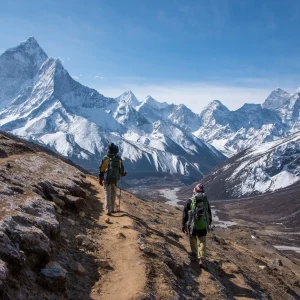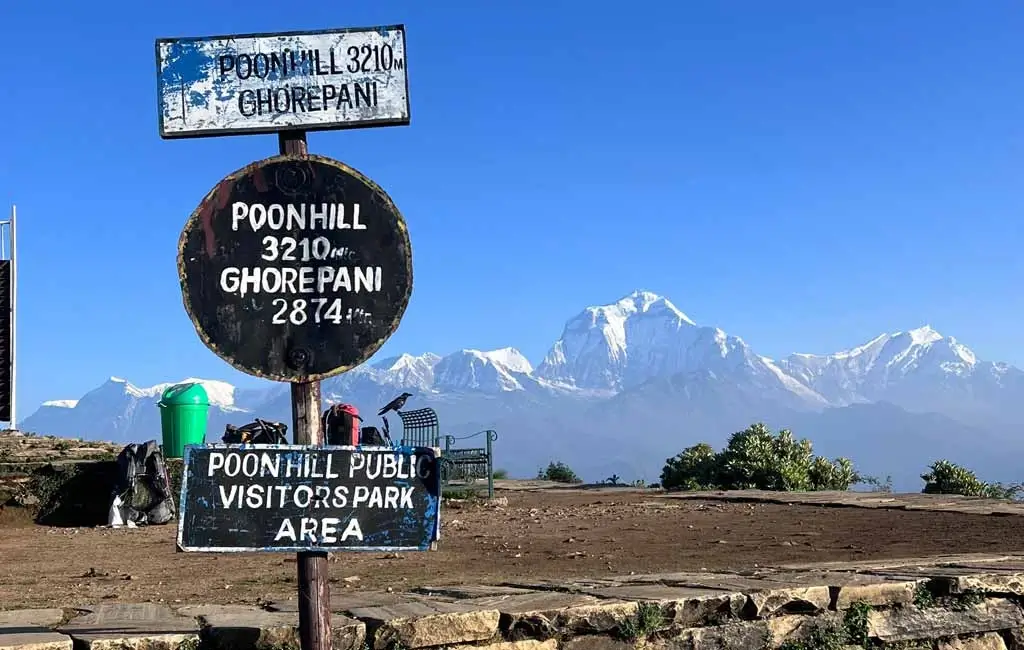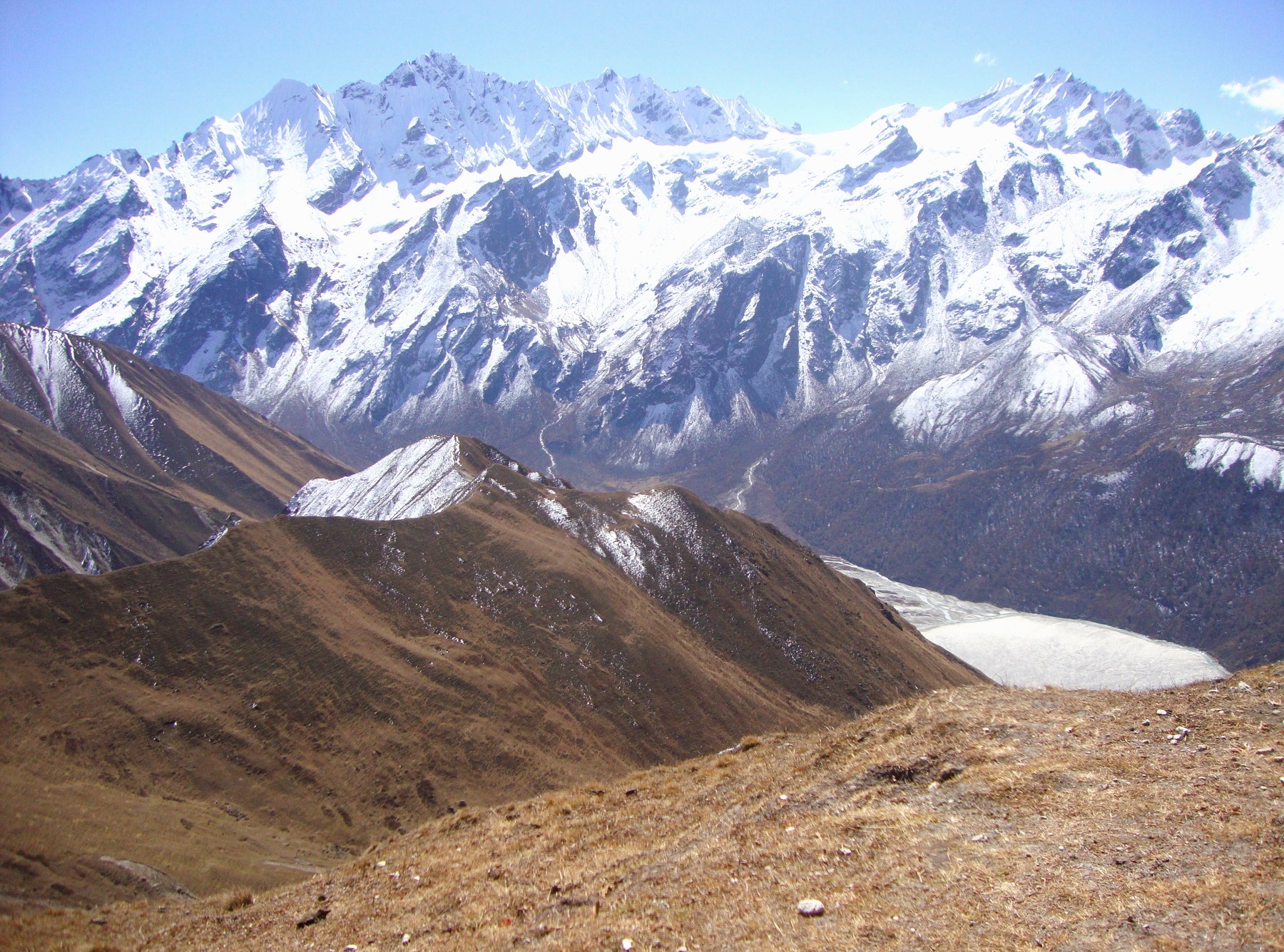
"Trekking in Nepal is Breathtaking – But Is It Really Safe for Beginners?"
Have you ever dreamed of walking among the tallest mountains in the world? Trekking in Nepal is like stepping into a real-life adventure story! Imagine walking through green forests, crossing wobbly bridges over rushing rivers, and seeing snow-covered peaks that touch the sky. Nepal is home to the mighty Himalayas, including Mount Everest, the highest mountain on Earth!
In this guide, you’ll learn:
✅ Best trekking routes (Everest, Annapurna & more)
✅ Best time to visit (avoid monsoon risks!)
✅ Permits & costs (no hidden fees)
✅ Packing list (what to bring)
✅ Altitude sickness tips (stay safe!)
Let’s begin!
Trekking Permits and Costs
Trekking in Nepal is a dream adventure! But before you go, you need to know about trekking permits and costs. Don’t worry—it’s easy! Let’s break it down.
Why Do You Need a Trekking Permit in Nepal?
Nepal has beautiful mountains and trails. To keep trekkers safe and protect nature, the government asks for trekking permits. These permits help track visitors and support local communities.
Types of Trekking Permits in Nepal
There are three main permits for trekking in Nepal:
TIMS Card (Trekkers’ Information Management System)
Needed for most treks.
Two types: Blue (group trek) and Green (solo trek).
Cost:
NPR 2,000 (about $15) for foreigners.
NPR 1,000 (about $7) for SAARC nationals (India, Pakistan, etc.).
National Park/Conservation Area Permit
Needed for treks inside national parks like Sagarmatha (Everest), Annapurna, and Langtang.
Cost:
NPR 3,000 (about $25) for foreigners.
NPR 1,500 (about $12) for SAARC nationals.
Restricted Area Permit (RAP)
Needed for special treks like Upper Mustang, Manaslu, and Dolpo.
Cost:
$500 for 10 days (Upper Mustang, Dolpo).
$100 for 1 week (Manaslu, Tsum Valley).
Where to Get Trekking Permits?
You can get permits in Kathmandu or Pokhara:
TIMS Card: Nepal Tourism Board or trekking agencies.
National Park Permit: Department of Immigration or park entry points.
Restricted Permits: Only through registered trekking agencies.
Total Cost of Trekking in Nepal
Besides permits, you’ll need money for:
Flights (if going to Everest or Annapurna).
Food & Lodging (20−20−30 per day).
Guide/Porter (20−20−25 per day).
Example Costs for Popular Treks:
| Trek Name | Permit Cost (USD) | Total Budget (USD) |
|---|---|---|
| Everest Base Camp | $50 (TIMS + Park) | 1,000−1,000−1,500 |
| Annapurna Circuit | $40 (TIMS + Park) | 800−800−1,200 |
| Upper Mustang | $500 (RAP) | 1,500−1,500−2,000 |
Why Choose Nepal for Trekking?
Trekking in Nepal is a dream adventure for many people around the world. With its tall mountains, green forests, and friendly locals, Nepal is one of the best places for trekking. But why should you choose Nepal for your next trek? Let’s find out!
1. The Mighty Himalayas
Nepal is home to the tallest mountains in the world, including Mount Everest, the highest peak on Earth! Trekking in Nepal means walking on trails with amazing views of snow-covered peaks, deep valleys, and sparkling rivers.
2. Beautiful Trails for Everyone
Whether you are a beginner or an expert, Nepal has trekking trails for all. Some easy treks like Ghorepani Poon Hill are perfect for families, while harder ones like Everest Base Camp challenge experienced trekkers.
3. Unique Culture and Traditions
While trekking in Nepal, you will meet people from different cultures. You can visit ancient monasteries, see colorful festivals, and taste delicious local food like dal bhat (rice and lentils). The Nepali people are very kind and always welcome visitors with a smile.
4. Amazing Wildlife
Nepal’s forests are full of rare animals like red pandas, snow leopards, and many birds. In places like Chitwan National Park, you might even see a rhino or an elephant!
5. Safe and Well-Organized Treks
Nepal has many experienced guides and porters who help trekkers stay safe. The trails have tea houses (small hotels) where you can rest, eat, and sleep comfortably.
6. Best Time for Trekking in Nepal
The best seasons for trekking in Nepal are spring (March-May) and autumn (September-November). The weather is clear, and the views are breathtaking!
Is Trekking in Nepal Safe for Beginners?
Trekking in Nepal is a dream for many adventure lovers. With its stunning mountains, green valleys, and friendly locals, Nepal is one of the best places for trekking. But if you’re a beginner, you might wonder: Is trekking in Nepal safe for me?
The good news is—YES! Nepal has many easy treks perfect for beginners. With the right preparation, anyone can enjoy the beauty of the Himalayas safely. Let’s find out how!
Why is Trekking in Nepal Safe for Beginners?
1. Easy Trekking Routes
Nepal has many beginner-friendly treks like:
Ghorepani Poon Hill Trek (Short and scenic)
Langtang Valley Trek (Beautiful forests and villages)
Everest View Trek (Amazing mountain views without extreme difficulty)
These treks have well-marked trails, teahouses for rest, and gentle slopes—perfect for first-timers!
2. Experienced Guides & Porters
Hiring a local guide makes trekking in Nepal safer. They know the routes, help with language barriers, and ensure you don’t get lost. Porters can carry your bags, making the trek easier.
3. Safe Food & Accommodation
Nepal’s popular trekking routes have many teahouses (small guesthouses) where you can eat and sleep. The food is simple but safe (try dal bhat—it gives you energy!). Always drink boiled or filtered water.
4. No Extreme Altitude (For Beginner Treks)
High-altitude treks can be risky, but beginner treks stay at safe heights (below 4,000m). This reduces the risk of altitude sickness. Just walk slowly, drink water, and listen to your body.
5. Friendly Locals & Helpful Culture
Nepali people are very kind and helpful. If you need directions or help, villagers and fellow trekkers will gladly assist you.
Best Treks in Nepal (2025 Updated List)
Here are the top 5 treks for trekking in Nepal:
1.Everest Base Camp Trek
Difficulty: Moderate
Days Needed: 12-14
Best Time: March-May & September-November
Why You’ll Love It:
Stand at Kala Patthar (5,644m) for sunrise over Everest
Explore Namche Bazaar, the busy Sherpa town
Visit ancient Tengboche Monastery
Good to Know:
You’ll sleep in cozy teahouses along the way
Altitude sickness is a real risk – go slow!
Pack warm clothes – nights get very cold
Click here if you want to know more about this trek

2. Annapurna Circuit Trek (Best Views)
Difficulty: Moderate-Challenging
Days Needed: 15-18
Best Time: Spring & Autumn
Highlights:
Cross the thrilling Thorong La Pass (5,416m)
See the Tilicho Lake, one of the highest lakes
Relax in natural hot springs at Tatopani
Alternative: Annapurna Base Camp (ABC) Trek is shorter and great for beginners.
Click here if you want to know more about this trek
3. Langtang Valley Trek
Difficulty: Easy-Medium
Duration: 7-10 days
Best Season: March-May & Oct-Dec
Highlights:
Close to Kathmandu (no flight needed).
Meet Tamang people and try yak cheese.
See Langtang National Park (red pandas live here!).
Cost: 600−600−1,000
- Click here if you want to learn about this trek.

4. Manaslu Circuit Trekking
Difficulty: Hard
Duration: 14-16 days
Best Season: Sept-Nov & April-May
Highlights:
Less crowded than Everest & Annapurna.
Cross Larkya La Pass (5,106m).
Visit Tsum Valley, a hidden Buddhist land.
Cost: 1,300−1,300−2,000
- Click here if you want to know more about this trek

5. Ghorepani Poon Hill Trek (Best for Beginners)
Difficulty: Easy
Duration: 4-5 days
Best Season: All year (except monsoon)
Highlights:
Sunrise at Poon Hill – see Dhaulagiri & Annapurna.
Walk through rhododendron forests (pink flowers in spring!).
Cost: 300−300−600
- Click here if you want to know more about this trek.

How to Choose the Best Trekking Company?
✅ Check Licenses – Only book with government-registered agencies.
✅ Read Reviews – Look for TripAdvisor & Google reviews.
✅ Safety First – Ask about emergency oxygen & evacuation plans.
✅ Eco-Friendly – Choose companies that support local communities.
Packing List for Trekking in Nepal
Must-Have Gear:



For more details visit here
Clothing Tips:
Dress in layers – hot days, cold nights
Avoid cotton – it stays wet when you sweat
Bring 2-3 pairs of good hiking socks
Don’t Forget:
Headlamp (for early morning starts)
Basic first aid kit
Diary to record your adventure!
Best Time for Trekking in Nepal
Nepal has four seasons, and some are much better for trekking in Nepal:
✔ Spring (March-May):
Warm days with flowers blooming
Best for: Everest, Annapurna, Langtang
✔ Autumn (September-November):
Clear skies and best mountain views
Most popular time – book early!
✖ Monsoon (June-August):
Heavy rains and leeches
Only Upper Mustang is good now ❄ Winter (December-February):
Very cold but fewer people
Only lower altitude treks recommended
Pro Tip: October-November is the absolute best time for trekki in Nepal with perfect weather
Altitude Sickness Tips:
Walk slow, drink water, sleep low.
Diamox (medicine) helps if needed.
How to Stay Safe:
Go up slowly (don’t climb more than 500m per day)
Drink 3-4 liters of water daily
Consider taking Diamox (ask your doctor)
Other Safety Tips
Never trek alone in remote areas
Tell someone your route
Get travel insurance that covers high altitude
Essential Travel Tips for Trekking in Nepal: A Simple Guide (2025)
Planning your first trekking in Nepal adventure? These easy travel tips cover packing, permits, safety, and cultural advice to make your Himalayan trip amazing!
Introduction: Getting Ready for Your Nepal Trek
Trekking in Nepal is like stepping into a real-life adventure movie! But before you go chasing mountain views, there are some important things to know. These simple tips will help you stay safe, save money, and have the best experience possible.
1. Pick the Right Trek for Your Level
Not all treks are the same! Here’s how to choose:
For Beginners (First Timers):
Ghorepani Poon Hill (3-5 days)
Langtang Valley (7-10 days)
Everest View Trek (7 days)
For Experienced Walkers:
Everest Base Camp (12-14 days)
Annapurna Circuit (15-18 days)
Manaslu Circuit (14-16 days)
Pro Tip: If it’s your first time trekking in Nepal, start with an easier route to see how your body handles the altitude.
2. Pack Smart – Don’t Carry Too Much!
Must-Have Items:
Broken-in hiking boots (NOT new ones!)
Warm jacket (even in summer)
Water bottle with filter
Sun hat and sunglasses
Basic first aid kit
Leave Behind:
Heavy books (take a Kindle)
Too many clothes (you can wash things)
Expensive jewelry
Packing Hack: Roll your clothes instead of folding – it saves space!
3. Stay Healthy in the Mountains
Altitude Sickness Prevention:
Go slow (don’t rush up the mountain)
Drink 3-4 liters of water daily
Eat garlic soup (it really helps!)
Sleep lower than you walk during the day
Food Safety:
Only drink boiled or filtered water
Peel fruits before eating
Stick to cooked foods in remote areas
4. Money Matters
Cash is King:
ATMs disappear after Kathmandu/Pokhara
Bring small Nepali rupee notes (for buying water/snacks)
Keep money in different places (some in bag, some in pocket)
Daily Budget:
Teahouse stays: $5-10 per night
Meals: $3-8 per meal
Shower charges: $1-3
WiFi: $2-5 per hour
5. Be a Respectful Visitor
Cultural Tips:
Always walk clockwise around Buddhist stupas
Don’t touch people’s heads (it’s rude)
Ask before taking photos of locals
Dress modestly (cover shoulders/knees in villages)
Environmental Tips:
Carry your trash down (no littering!)
Use water sparingly (it’s precious up high)
Say NO to plastic bottles (bring your own)
6. Technology on the Trail
What Works:
Local Ncell SIM cards (buy in Kathmandu)
Portable chargers (outlets cost money)
Offline maps (download before you go)
What Doesn’t Work Well:
Streaming videos (too slow)
Phone calls (spotty service)
Hair dryers/curling irons (no power)
7. Hiring Guides and Porters
Why Hire Help?
Guides know the trails and weather
Porters carry your heavy bag (you just daypack)
They help with language and culture
Fair Pay Guide (2025 Rates):
Guide: $25-35 per day
Porter: $15-25 per day
Always tip 10% if service is good
8. When Things Go Wrong
Emergency Contacts:
Tourist Police: 1144 (from local phones)
Your country’s embassy number
Travel insurance emergency line
Common Problems Solved:
Lost? Stay put and ask other trekkers
Sick? Descend to lower altitude
Out of money? Western Union in Pokhara
Final Checklist Before You Go
✅ Got your permits (TIMS + park entry)
✅ Packed the right clothes (layers!)
✅ Told family your route
✅ Downloaded offline maps
✅ Bought travel insurance
✅ Broken in your boots
Ready for Your Trekking Adventure in Nepal?
Now that you know all about trekking in Nepal, it’s time to:
Choose your perfect trek
Start training (walk with your backpack!)
Pack your bags
Pro Tip: Book at least 6 months early for the best guides and teahouses!
The mountains are calling – will you answer?
Frequently Asked Questions
Some of the frequently asked questions about Trekking in Nepal
1. Which is the easiest trek in Nepal?
Answer: Ghorepani Poon Hill (5 days, great for beginners).
3. Is Nepal safe for female trekkers?
Answer: Yes! Many women trek solo, but avoid walking alone at night.
2. Can I trek solo in Nepal?
Answer: Yes, but guides are safer (especially in remote areas).
4. What’s the Cheapest Trek in Nepal?
Answer: Ghorepani Poon Hill (3-5 days, ~300) are budget-friendly. Costs include permits, food, and teahouse stays.






